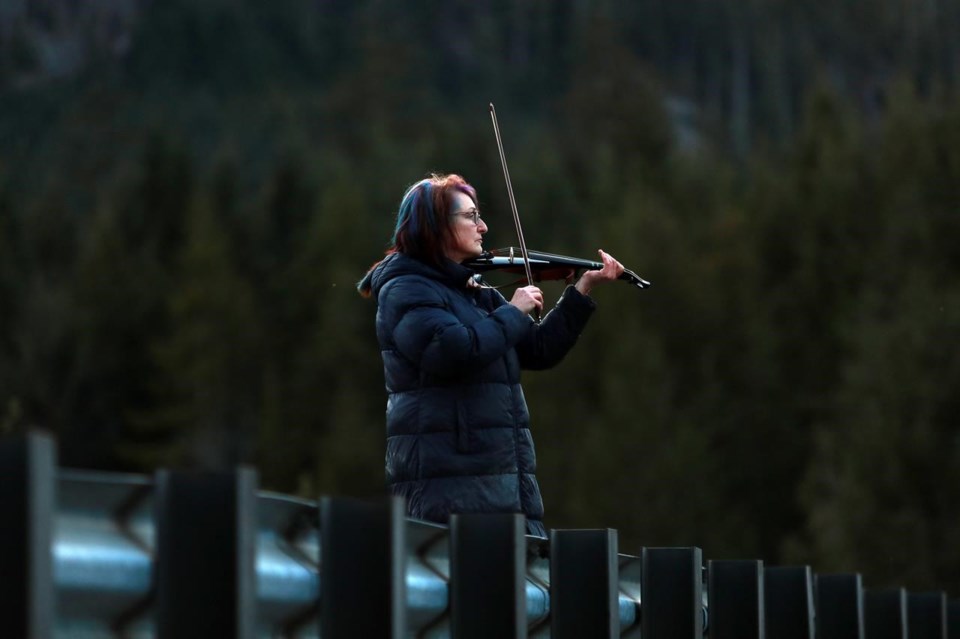ZEBALLOS, B.C. — Carol Love watches the tides at a Vancouver Island lagoon, and when the time is right, she starts to play her violin.
She plays for an audience of one, a killer whale calf that has been trapped alone in the lagoon for almost a month.
Preparations for more conventional efforts to save the whale continue, involving a large fishing net.
But Love, from Nanaimo, B.C., stands and plays on a bridge at high tide, hoping her music entices the young orca to swim through a narrow channel, under the bridge and into the open ocean to freedom, no net required.
"She was curious," Love said Thursday after an afternoon recital for the female orca, named kwiisahi?is, or Brave Little Hunter, by the Ehattesaht First Nation.
"It came closer to me," she said. "It absolutely did. I'm glad I got to see her today, especially if they are going to get her out."
Love, a Canadian military veteran, said her first visit to the bridge Wednesday night didn't work, but she did see the orca calf rise to the surface in the distance.
"A lot of my violin notes sound like orca, so hopefully she'd resonate with some of my sound and coax (herself) underneath and out to the ocean," she said. "Every high tide I'll be on this bridge playing for her."
Love isn't the only one working to free the whale from the lagoon near Zeballos, 450 kilometres northwest of Victoria, where it has been alone since its pregnant mother became stranded on a rocky beach at low tide and died.
A rescue team continues to prepare to catch the killer whale calf in a net and transport it to the nearby ocean.
Ehattesaht First Nation Chief Simon John would not confirm the exact timing of the next rescue attempt in an interview on Thursday, other than say, "it is going to happen eventually."
An attempt last Friday involved more than 50 people using boats, nets, and drones. But they were unable to corral the young orca to a shallow area of the lagoon where they planned to manoeuvre it into a sling, lift it onto a truck, then take it on a barge out to sea, for a potential reunion with its pod.
More rescue equipment has been arriving over the past few days, including a large seine netting boat from Campbell River's Homalco First Nation.
Road access to the planned rescue site at the shallow end of the Little Espinosa Inlet lagoon was blocked Thursday afternoon, with a sign saying: "Active work site, no unauthorized access permitted."
John said the Ehattesaht First Nation is committed to the whale's rescue.
"We need to save it," he said. "We're all family in our community and family matters, and family matters to the whale that we are trying to help and get her to her pod. It's very important."
Love was doing her bit by playing her violin along to a recording of her favourite song, "Tennessee Whiskey" by country singer Chris Stapleton.
"Everything's been tried and you have to think outside the box," Love said.
"I'm out of my skin with joy," she said, getting "goose pimples" at the prospect of successfully luring the whale with her music. "I really would love it if it works."
This report by The Canadian Press was first published April 18, 2024.
Dirk Meissner, The Canadian Press




